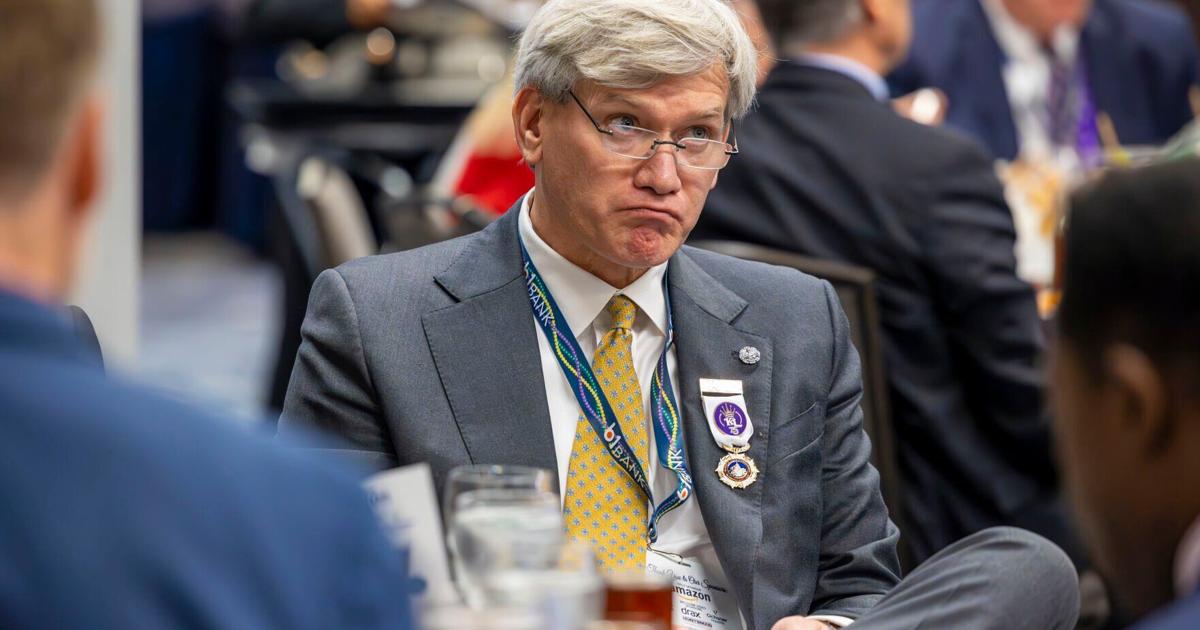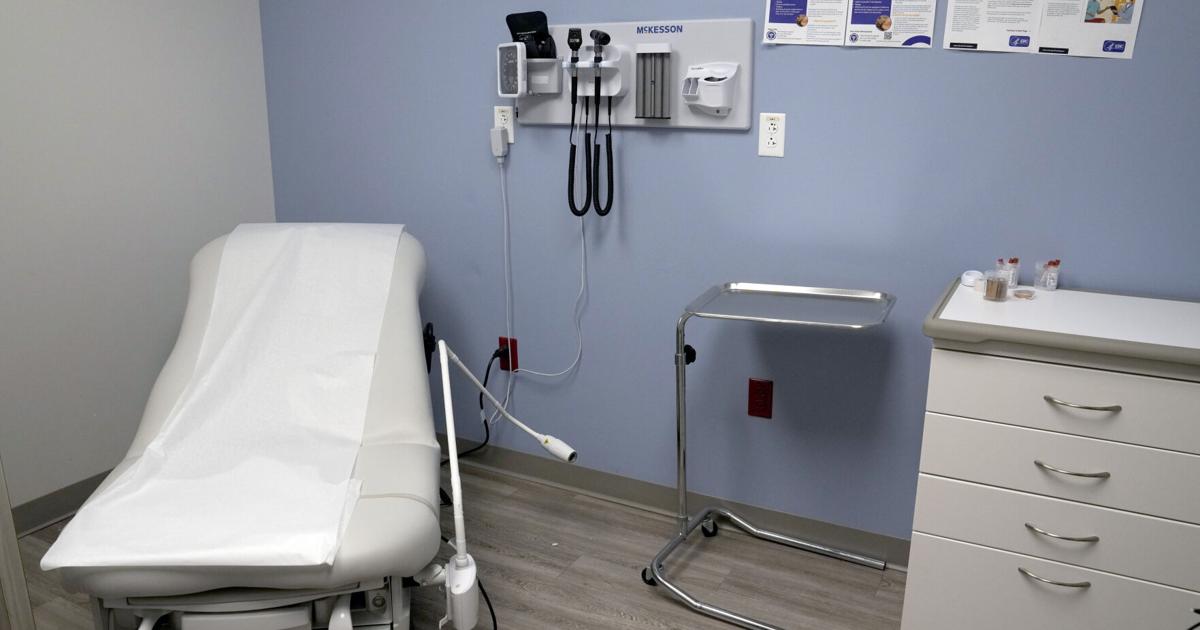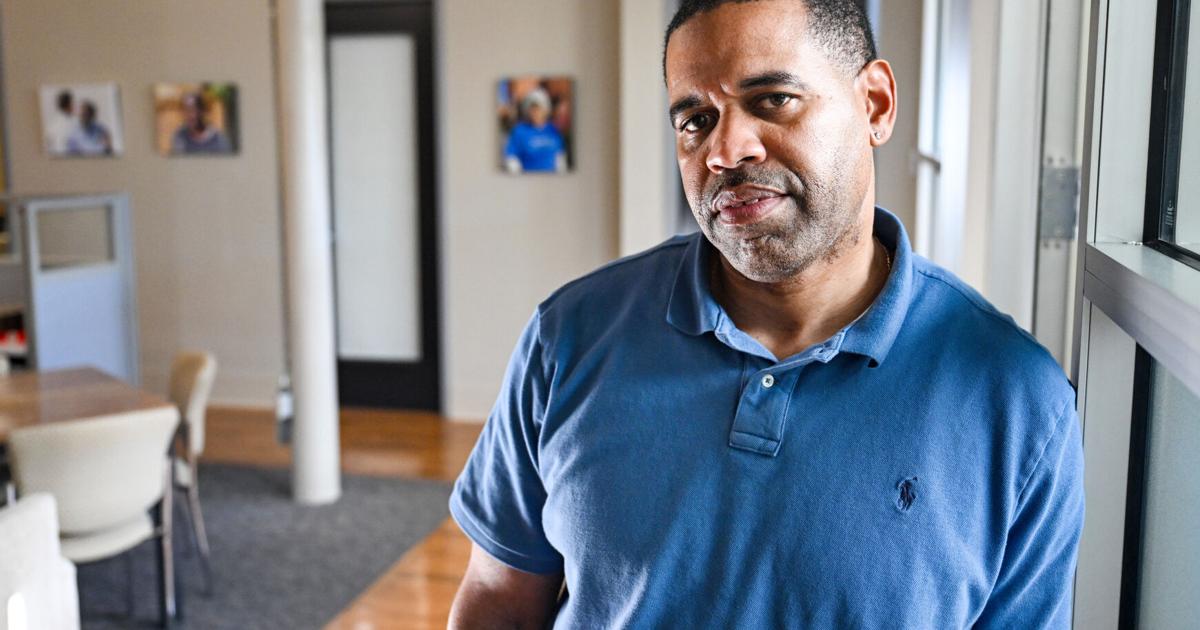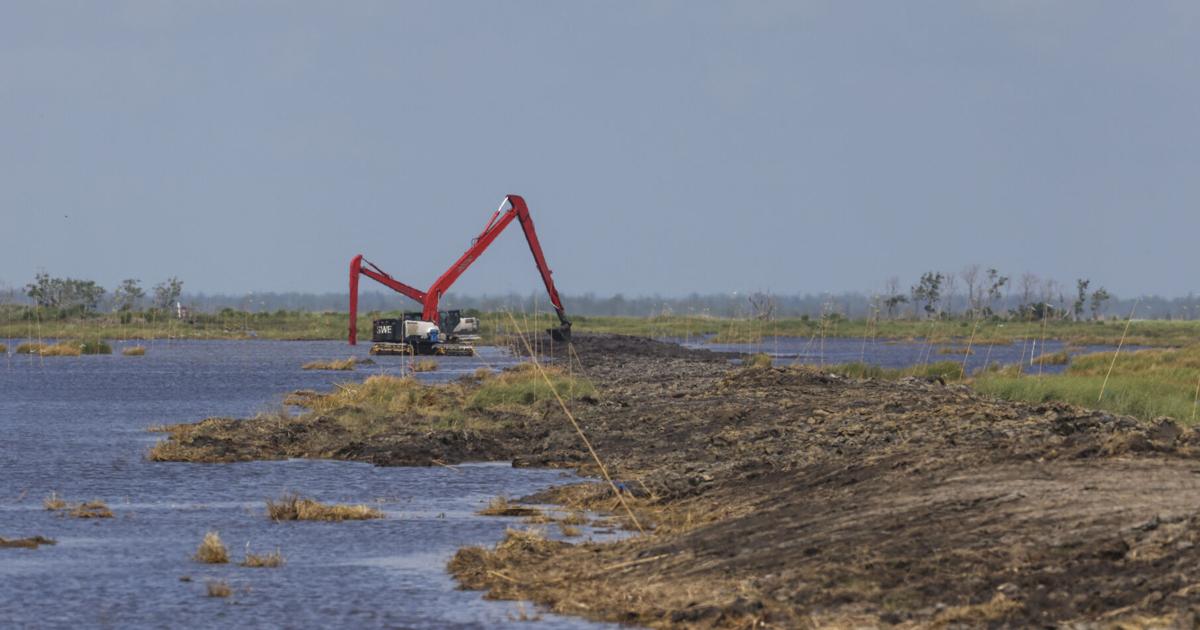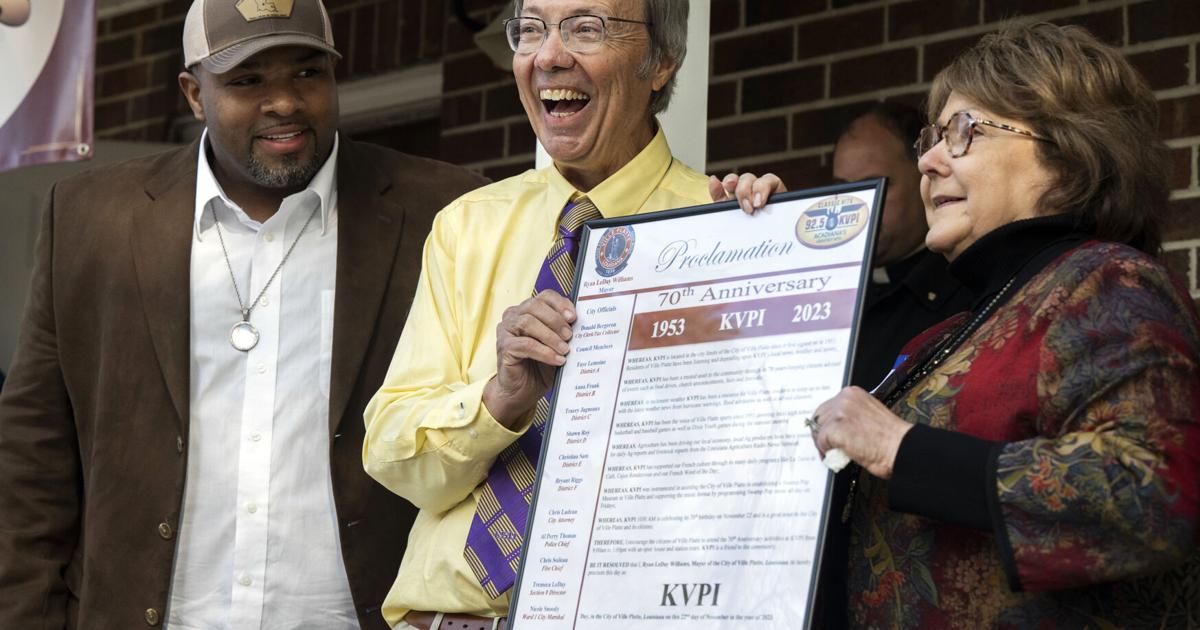Louisiana
EPA to Louisiana: Strengthen Baton Rouge air emission rules, or we will

Louisiana must strengthen rules over the release of ozone-creating nitrogen oxide air emissions by industries in the Baton Rouge area during startups, shutdowns and malfunctions, or the federal Environmental Protection Agency will write and enforce its own rules, the agency announced this week.
The recommended rule changes would affect nitrogen oxide emissions from power plants and industrial facilities in five Baton Rouge-area parishes that were considered in violation of federal ground-level ozone restrictions for decades before improvements allowed ozone levels to meet acceptable levels in 2015. The parishes are Ascension, East Baton Rouge, Iberville, and Livingston and West Baton Rouge.
The changes also would affect four nearby parishes whose own ozone levels were in attainment, but whose emissions affect air quality in the Baton Rouge-area parishes: East Feliciana, Pointe Coupee, St. Helena and West Feliciana.
In 2015, the EPA notified the state it was reducing the acceptable levels for emissions of nitrogen oxide and other ozone precursor air pollutants, and requested that Louisiana upgrade its plan for the high-ozone region to reflect the changes.
The Clean Air Act sets up a partnership between the EPA and states where the EPA establishes requirements for reducing emissions to safe levels, but leaves it to states to create their own implementation plans.
Louisiana submitted its plan in 2016. State officials revised it in 2017 to allow industries to either comply with the emission limits and operation standards at all times, including during startups and shutdowns — or to follow individually tailored “work practice standards” during periods of startup and shutdown, during which, EPA said, the limits could be exceeded.
In June, EPA published a notice in the Federal Register saying it found the state’s work practice standards provisions were too lenient. In this week’s decision, the federal agency refused to accept arguments by the state Department of Environmental Quality, Louisiana Chemical Association and Louisiana Mid-Continent Oil and Gas Association that attempted to support the way the work practice standards were being implemented.
The state and industry groups argue that the stringent limits followed during normal operations are either not achievable or cost too much for many utilities and industries to put in place during startups, shutdowns or malfunctions.
In its response, EPA said there may be some instances where that’s true. But the way Louisiana’s rules are written allow state officials to approve emission increases without EPA approval, in violation of federal law.
In some cases, EPA officials said, the state was assuming, without proof, that emissions during those periods would not be more than historic emission levels. In others, they said the rules did not require industries to use proven “maximum achievable control technologies” to reduce emissions during those periods, as required by the Clean Air Act.
“This final action will require Louisiana to fix the problem with these (state implementation plan) revisions within two years from the effective date of Jan. 8, 2024,” said Joseph Robledo, a spokesperson for EPA’s Dallas regional office. “Otherwise, EPA will issue a federal air plan for the state.”
Robledo said the state “has flexibility” in how it decides to meet the EPA’s requirements.
The LDEQ, which oversees the air emissions program for the state, does not know when it will respond to the filing, said spokesperson Gregory Langley.
“At this point, LDEQ has several options: pursue litigation, craft new startup/shutdown work practice standards, or require affected sources to comply with the emission factors in (the state law) at all times during the ozone season,” Langley said. “A decision on which way to go has not been made, but the second and third options would require rulemaking.”
“Our air people will analyze the LDEQ’s options and provide those, as well as a recommended action for management to consider,” he said.
The EPA mandate comes amid a change in administrations. Gov.-elect Jeff Landry will be sworn in on Jan. 8, and he has already named Aurelia Skipwith Giacometto, who served as secretary of the U.S. Fish and Wildlife Service in former President Donald Trump’s administration, to lead the LDEQ.
Both Landry and Giacometto have been critical of what they view as over-regulation of industry, saying it’s bad for the economy. And as attorney general, Landry has challenged in federal court several other EPA efforts to reduce Louisiana’s air emissions.

Louisiana
Growing up in rural Louisiana was hard for many. Nolan Fontenot shares his story

Editor’s Note: On writer Melinda Rawls Howell’s trips to the East Feliciana Council on Aging she’s spoken with many who have shared stories of growing up in and around the Felicianas. While not a Feliciana native, Nolan Fontenot’s stories of his early childhood growing up in another parish are similar to those told by many who grew up in the Felicianas. Here is the first of a two-part series on Fontenot’s life.
Nolan Fontenot’s stories are full of readily recalled dates and memories of family, places, other people and events. They are also glimpses of local, Louisiana, American history and of personal challenges that many families may have experienced.
When listening to Fontenot tell who and where he came from, why he settled in Jackson and went to work at institutions in East and West Feliciana parishes, his reminiscing is tinged with humor and compassion — reflecting his personality and character.
He recalls days of struggle and hardships, kindness and opportunities, growth and change, finding God and ministering to others. He still speaks with a lingering Cajun French accent and sprinkles French expressions/words in his conversation with a slight smile.
A large family in rural America
Fontenot, 86, is one of 16 children born to Feranand Joseph Fontenot and Threase Charles Fontenot. He was born April 26, 1938, during the Great Depression, into a French-speaking, Catholic family on a cotton farm in Tate Cove off Wabash Road north of Ville Platte, in Evangeline Parish.
There were three sets of twins in his family, of which Fontenot is one, and his parents “lost one child at 8 months,” he adds. The first child, Abel, was born in 1918 followed by Lee in 1919, Melton in 1921, Clamie in 1923, by Ethel who was the infant who died, then Eula in 1926, twins Harris and John in 1928, Rosella in 1931, Aline and Louise in 1932, Eva in 1943, Irene in 1936, twins Enola and Nolan in 1938 followed by the last child, Edison, born in 1939.
Growing mostly cotton, the hardship payment and more
The farm was owned by Dr. Arthur Vidine, who Fontenot describes as “very good doctor.” As a sharecropper, his father had “to give one-third of his profits from his cotton and sweet potato crops to the landowner,” he explains. In addition to those crops, he says, they raised some corn, soybeans and rice.
“We were very poor … Evangeline Parish was a poor parish“ and “then came the Depression,” he says.
Except for farming, the only other regular source of income for the family was an $8-a-month “hardship” payment. This was because they lived near “the Cabot carbon-black plant” which “had no filters” and dropped airborne pollution onto everything, he says.
“The closer your farm was to the plant the more money you were paid” and “the carbon affected the color and price we got for the cotton,” he adds.
His father plowed the cotton fields behind one of two horses they owned — Honey or Bella. As a child, Fontenot says he “couldn’t wait until he was big enough” to help plow.
He says father “walked his life away.” His father, Fontenot says, “never owned an automobile … he had a wagon and a buggy.”
For meat they had some chickens and ate “coon” sometimes, he says. They ate crawfish but his mother “did not like to cook them,” he adds.
The cattle on the farm belonged to the landowner but the family could milk the cows in exchange for taking care of them, he adds. There were two barns on the site — one could hold “1,600 bales of hay for the cows in winter, “ he says. The other one was the stables and housed the buggy and wagon.
In the town of Ville Platte, they got store-bought necessities on credit at the store of Henri Vidrine, the brother of Dr. Vidrine. He remembers his sisters’ dresses were made from the cloth from flour sacks.
The mud house, chores, siblings, school
Fontenot’s family first lived in a one-bedroom house but they eventually moved into a three-bedroom house nearby on the same farm. He calls it the “mud house.” The wood-frame structure “had walls made of mud, twigs and Spanish moss that were whitewashed inside and covered with shiplap outside,” he says.
The house had a two-sided fireplace, he adds.
Drinking water came from a cistern and a small amount of “coal oil was added” to discourage mosquitoes. The water was also “strained through cloth to remove mosquito larvae.” There was “an outhouse for the girls to use and the barn for the boys,” he says.
Like most children growing up on a farm he helped with chores. After moving to town as a youth, he briefly worked at a creamery and was hired out to dig sweet potatoes and pick cotton. As for picking cotton he “wasn’t very good at it,” he says, shrugging and tilting his head slightly and that he was “slow” and, of course, “didn’t like the heat.”
As children they “went barefoot unless it was extremely cold,” he says. One of his older sisters, Irene, who he remembers as having a ready laugh, was the one who would defend them, when needed, on the school bus. Another sister, Rosella, was in charge of washing the kids in the evening but conditions were very basic — a shared bowl of water and cloth.
He remembers one of his older brothers, Melton, married at 16 and moved away to farm a place south of Ville Platte. Another older brother, Lee, was in the United States Army for eight years serving in the military police during World War II from 1941-1945.
Lunch during the school year was often “milk pudding sandwiches made on homemade bread” and “it was good,” he says.
He remembers that his only younger brother, Edison, did not want to go to school when it was his time. He says his little brother cried and cried and, arriving at school with several big pecans in his pocket, tried to give them to the teacher so she would let him stay with his big brother. “She probably didn’t even understand him” and that his prized pecans were an attempted bribe, he says.
The radio and electricity
The family had a box-shaped radio, which was powered by a large free-standing battery and connected to a tall antenna. They listened sparingly and mostly to the French programs and music, he says.
His parents did eventually get electricity on the farm in the 1950s.
It wasn’t too long afterward that they all moved into town, he says. Fontenot’s father died at 70 in 1969 and his mother lived to be 76 and passed away in 1977.
Louisiana
U.S. Sen. Bill Cassidy touts infrastructure grants awarded to Louisiana municipalities, utility districts during Donaldsonville event

Louisiana U.S. Sen. Bill Cassidy released a statement after awarding more than $52 million in grants from the Infrastructure Investment and Jobs Act to municipalities and gas utility districts during an event May 17 in Donaldsonville.
“This money will decrease the risk of explosion and decrease the amount of wasted methane which people are paying for, thus saving folks money,” Cassidy said in the announcement. “It also cleans up our environment. It’s a good investment of taxpayer dollars for the benefit of folks in Louisiana.”
In an effort to safeguard natural gas pipelines, nearly $1 billion will be awarded over a five-year span throughout the country with $392 million being awarded this year, the senator added.
As previously reported, the cities of Donaldsonville, Port Allen and Walker, the town of Berwick, and gas utility districts in East Baton Rouge, East Feliciana and West Feliciana parishes were grant recipients.
Similar funding was awarded last April with more than $27 million going to municipalities in south and central Louisiana.
Per Cassidy, the IIJA has awarded more than $9.1 billion to Louisiana since the president signed it into law in late 2021.
The funding has gone toward repairing bridges, building flood protection systems and extending broadband in rural areas.
Cassidy noted Donaldsonville Mayor Leroy Sullivan’s city received the largest grant, which was $20 million to replace 27.3 miles of natural gas infrastructure.
Sullivan said the gas line improvement grant from the Pipeline and Hazardous Materials Safety Administration “is a pivotal moment for the City of Donaldsonville.”
“Sen. Cassidy was instrumental in helping us secure this funding and we are deeply grateful for his unwavering support.,” the mayor said in the announcement. “This project is an investment in the future of our city and positions our community for continued growth.”
Gonzales Weekly Citizen and Donaldsonville Chief, part of the USA Today Network of Louisiana, cover Ascension Parish and the greater Baton Rouge area. Follow at facebook.com/WeeklyCitizen and facebook.com/DonaldsonvilleChief.
Louisiana
St. Tammany library board members sue over removal • Louisiana Illuminator

Three St. Tammany library board members removed after a years-long fight over book content are suing the parish council and one of its district representatives in an attempt to block their removal.
Their federal lawsuit comes after the parish council voted earlier this month to replace five of the six members of the St. Tammany Library Board of Control, a volunteer body that oversees the parish library system. Their removal culminated months of contentious fights.
Conservative activists in the parish, led by the far-right St. Tammany Library Accountability Project, attempted to ban more than 150 books it deemed sexually explicit. Most of the titles challenged have LGBTQ+ themes. The library board repeatedly refused to limit access to the books, rejecting arguments that the books were sexually explicit. Their refusal put them crosswise with the new, more conservative parish council that took office earlier this year.
The three board members — Bill McHugh, Anthony Parr and Rebecca Taylor — are suing the St. Tammany Parish Council and Councilman David Cougle, a founder and attorney for the Accountability Project who led the charge to remove the members. The plaintiffs have asked the court for a temporary restraining order on their removal, which would allow them to stay in their positions while the lawsuit plays out.
GET THE MORNING HEADLINES DELIVERED TO YOUR INBOX
In a statement, the plaintiffs emphasized the lawsuit was undertaken by them as individuals, not as an official action by the library board. They also noted Kelly LaRocca, the parish’s library director, is not involved in the suit.
Cougle has not yet responded to a request for comment for this report.
On May 4, the parish council voted to replace five board members, ostensibly because the council had discovered the board was not serving in staggered terms, as required by state law. But rather than staggering the current board members, the council used the opportunity to remove board members that resisted book restrictions.
That violated the First Amendment rights of the ousted board members, the plaintiffs charge.
“Plaintiffs were engaged in constitutionally protected activity when they spoke and acted at Library Bord [sic] meetings, as well as when they spoke out on matters of public concern such as the controversy over books with LGBTQ themes and characters, the presence or absence of sexually explicit material in libraries, whether or not certain materials available in libraries is ‘pornography’ or constitutes ‘obscenity,’ and whether and how minors have access to such materials,” the lawsuit reads.
The lawsuit alleges the concern over staggered terms was an “obvious ploy” used to retaliate against their protected speech and their refusal to restrict access to books.
“Supreme Court precedent has focused “not only on the role of the First Amendment in fostering individual self-expression but also on its role in affording the public access to discussion, debate, and the dissemination of information and ideas,” the lawsuit says. “And it has recognized that ‘the State may not, consistently with the spirit of the First Amendment, contract the spectrum of available knowledge.’”
The suit has been filed in federal court for the Eastern District of Louisiana. If the court opts to grant a temporary restraining order, the existing library board would be allowed to continue serving pending the outcome of the lawsuit, which seeks to permanently block the council’s resolution to remove members.
“Preventing the Parish Council from engaging in unlawful patronage dismissal will preserve the integrity and independence of the Library Board, rather than leaving it subject to the political whims of the Parish Council,” the lawsuit says.
The lawsuit also says allowing the members to continue serving would continue to protect the public’s constitutional rights to receive information by maintaining their access to library books.
-

 News1 week ago
News1 week agoSkeletal remains found almost 40 years ago identified as woman who disappeared in 1968
-

 World1 week ago
World1 week agoIndia Lok Sabha election 2024 Phase 4: Who votes and what’s at stake?
-

 World1 week ago
World1 week agoUkraine’s military chief admits ‘difficult situation’ in Kharkiv region
-

 Movie Reviews1 week ago
Movie Reviews1 week agoAavesham Movie Review
-

 World1 week ago
World1 week agoCatalans vote in crucial regional election for the separatist movement
-

 News1 week ago
News1 week agoTrump, Reciting Songs And Praising Cannibals, Draws Yawns And Raises Eyebrows
-

 Politics1 week ago
Politics1 week agoNorth Dakota gov, former presidential candidate Doug Burgum front and center at Trump New Jersey rally
-

 Movie Reviews1 week ago
Movie Reviews1 week agoUnfrosted Movie Review: A sweet origins film which borders on the saccharine
